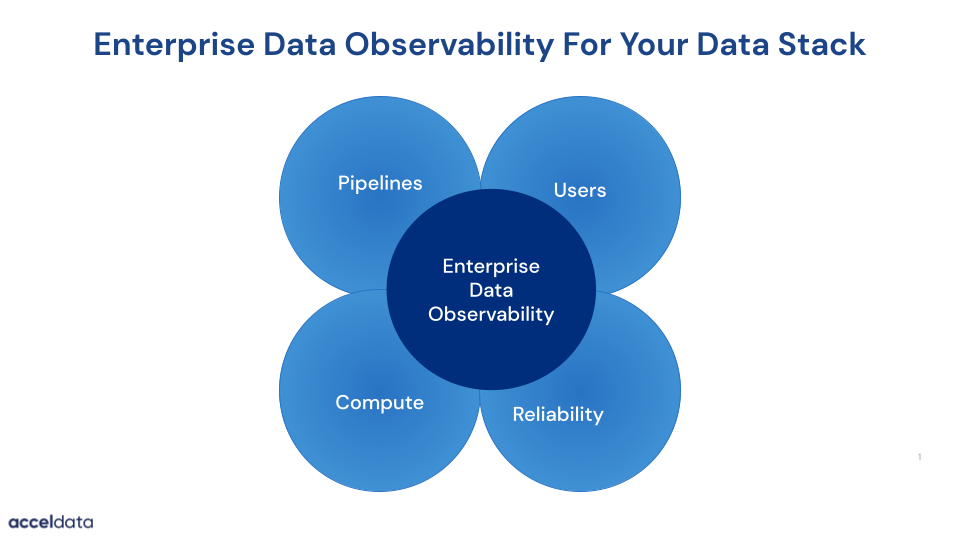Having data alone isn’t enough to deliver value to an enterprise. Orchestrating it in a usable format is what drives results.
According to a report by HT Mint, over 90% of the data available in the world today was generated over the last two to three years alone. A major contributor to this surge in data is the growing variety of industries that rely on data daily.
One such industry is the global IT ecosystem. As an amalgamation of various business units like IT outsourcing, business process outsourcing, IT consulting, hardware components, software products, and other IT-enabled services (ITeS), the industry is poised to grow at a CAGR of 7% and touch the $1.3 trillion mark by 2025.
For an IT/ITeS enterprise, data comes in all shapes and sizes. Whether it’s customer, operational, employee , or financial operations data, businesses are using this information to make processes, products, and services better.
In the era of hyper-information, disinformation can be equally destructive. The quality and integrity of the data in hand are what define the return on investment for various analytics and intelligence tools.
But before we can talk about addressing data quality concerns, we need to first understand how this data is being used to help IT companies.
The Role of Data in IT
By analyzing purchase trends, customer behavior, and overall employee productivity, IT/ITeS organizations have managed to forecast revenue, build better products, and increase output. All of this would have been impossible without the right data at hand.
Hence, the question of “How?” arises.
1. Optimizing Operations Through Intelligence
By analyzing an IT/ITeS enterprise’s historical data related to performance vs. output, actionable insights related to improving KPIs (Key Performance Indicators) can be harnessed. With the help of analytical tools and AI-based tools, a broader understanding of departmental shortcomings, resource shortages, skill gaps, and performance markers can enable organizations to make more informed decisions for success.
2. The Role of the Customer in Product Development
IT companies possess a vast repository of customer data when talking about product performance alone. Stored on logs that are routinely monitored, data related to platform bugs, UI/UX glitches, feature gaps, and more are scrutinized to alert corresponding teams for quicker resolution. Also, this data can be used to project trends for various customer requirements that arise from using particular product types, which are then fed to R&D teams.
3. Boost Sales and Revenue
Even in a skewed sector such as IT B2B, data helps in predicting the incoming requirements of customers, getting updated on evolving market trends & technological innovations, and deciphering the type of content that allows enterprises to attract customers. Furthermore, continuous data monitoring helps in delivering satisfactory customer support in real time, which improves customer retention metrics. By adjusting subsequent sales strategies and marketing campaigns, teams can continue to meet their revenue targets.
4. Efficient Root Cause Analysis (RCA)
In the era of data products and IoT (Internet of Things), the number of integrated systems, platforms, and interfaces keeps growing each day. With so many systems interacting each day, the possibilities of data streaming downtimes, and pipeline breaks can impact product performance. In such an environment, it is important to continuously monitor systems and devices to ensure the seamless functioning of products. Without the right contingency plans or solutions in place, customer satisfaction (CSAT) numbers can go down, which impacts the company’s bottom line.
5. Financial Operations Governance
IT service entities spend millions of dollars each year on various tools, additional services, and intelligence platforms. An important methodology to reduce the wastage of financial resources is to closely monitor systems that are adding value and the ones that are not! By delivering insights into business spend, organizations can save millions each year.
Data Observability Delivers Critical Data Insights
With the importance of data firmly established across the IT/ITeS industry, data observability arises as the most logical plan of action to manage, monitor, and demystify data quality concerns and data downtimes.
Software and IT firms already rely on observability as a solution to tackle data quality challenges and pipeline issues. However, most data observability platforms come with certain gaps that fail to address rising concerns for IT/ITeS enterprises, including:
- A juxtaposition between ITOps and DevOps, where both get a single view into applications and infrastructure for real-time troubleshooting.
- Total visibility into complex and dynamic data systems, as opposed to fractured visibility across disparate systems.
- Migration to cloud complexities, which leaves ITOps in the dark regarding the infrastructure layer and modern business application frameworks.
Data observability goes above and beyond just routine monitoring. It ensures teams are on top of breakdowns, and manages data across four layers: Users, Compute, Pipeline, and Reliability.

What this means for IT service providers is:
✔ Data flowing across diverse channels and pipelines are monitored in real-time, alerting users in the case of potential breakdowns.
✔ Analytical tool and platform expenditures are tracked and validated.
✔ Data reconciliation and schema drift issues are solved to combat data errors.
✔ A 360-degree view into the quality of data that is required across the organizational infrastructure (such as Data Engineers, Architects, Analysts, CDOs, etc.).
Acceldata is the market leader in enterprise data observability. With Acceldata’s multi-layered data observability solution, enterprises gain comprehensive insights into their data stack to improve data quality, pipeline reliability, compute performance, and spend efficiency.
Acceldata's solutions have been embraced by global enterprises, such as Oracle, PubMatic, PhonePe (Walmart), Verisk, Dun & Bradstreet, and many more. To learn more about our solutions and how we can help you take control of your data systems, get in touch with us today.
Photo by Chris Barbalis on Unsplash



.png)



.png)






.webp)
.webp)